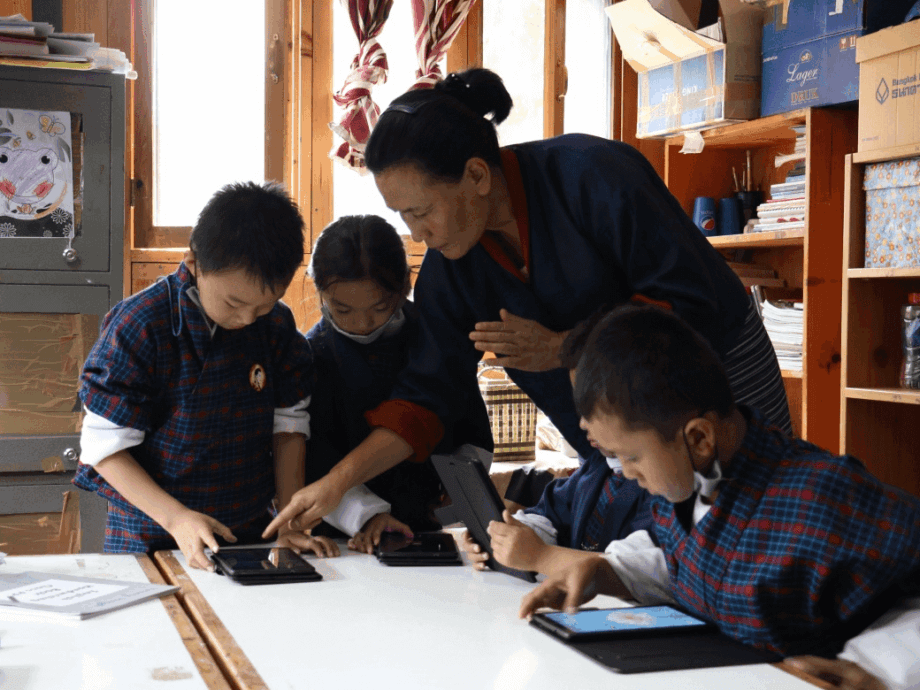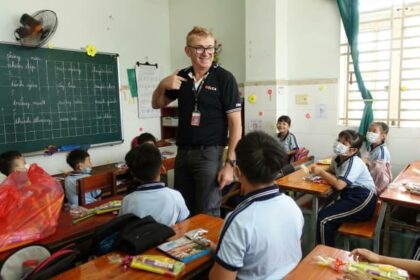Introduction: The Promise and Challenge of Inclusive Education in Bhutan
Bhutan, a nation renowned for its commitment to Gross National Happiness and sustainable development, has made significant strides in expanding access to education for all its citizens. Yet, for students with disabilities, the journey from primary school to higher education remains fraught with obstacles. Despite progressive policies and growing awareness, many young Bhutanese with disabilities find themselves excluded from higher education and, by extension, from the full spectrum of opportunities that education can provide.
- Introduction: The Promise and Challenge of Inclusive Education in Bhutan
- Understanding Inclusive Education: Global and Bhutanese Perspectives
- Progress and Achievements: Foundations of Inclusive Education in Bhutan
- Barriers to Higher Education: The Reality for Students with Disabilities
- Policy Landscape: National Strategies and Institutional Responses
- Case Study: Inclusive Education in Practice
- Technical and Vocational Education: Alternative Pathways
- Digital Transformation: Opportunities and Challenges
- International Comparisons and Best Practices
- The Road Ahead: Challenges and Opportunities
- In Summary
This article explores the current state of inclusive higher education in Bhutan, the barriers faced by students with disabilities, the policy landscape, and the ongoing efforts to create a more equitable and accessible educational system.
Understanding Inclusive Education: Global and Bhutanese Perspectives
Inclusive education is defined as an approach that ensures all students, regardless of their abilities or backgrounds, have equal access to quality learning opportunities. Globally, organizations like the World Bank and UNESCO emphasize that inclusive education is not just about physical access to schools but also about providing the necessary support, resources, and cultural shifts to enable meaningful participation and achievement for all learners.
In Bhutan, inclusive education is enshrined in the 2017 Standards for Inclusive Education and the 2019 draft National Education Policy. The country’s approach is shaped by its unique context—geographical challenges, a small population, and a strong emphasis on cultural preservation. Bhutan’s policies aim to value, accept, and support diversity in schools, ensuring every child has the opportunity to learn and thrive.
Progress and Achievements: Foundations of Inclusive Education in Bhutan
Bhutan’s journey toward inclusive education began in earnest in the 1970s with the establishment of the first special school for visually impaired children. Over the decades, the government expanded its efforts, integrating children with disabilities into mainstream schools and developing specialized institutes such as the Wangsel Institute for the Deaf.
Today, more than 80% of students with disabilities in Bhutan are enrolled in inclusive settings. The Ministry of Education and Skills Development (MoESD) has prioritized the construction of accessible Early Childhood Care and Development (ECCD) centers, retrofitting existing schools for accessibility, and providing assistive technologies and adapted furniture. The 13th Five-Year Plan (FYP) aims to establish 120 inclusive schools across the country, reflecting a strong policy commitment to equity and inclusion.
Recent national assessments, such as the Second National Education Assessment (NEA) conducted in 2024, included children with disabilities, demonstrating a growing recognition of the need to monitor and support their learning outcomes. According to UNICEF Bhutan, these assessments are crucial for understanding how children are learning and for identifying areas where additional support is needed.
Barriers to Higher Education: The Reality for Students with Disabilities
Despite these advances at the primary and secondary levels, the transition to higher education remains a significant hurdle for students with disabilities in Bhutan. Research and firsthand accounts reveal several persistent barriers:
- Lack of Support Services: Colleges and universities often lack essential support services such as trained sign language interpreters, note-takers, accessible learning materials, and counseling services. This absence makes it difficult for students with disabilities, particularly those who are deaf or blind, to participate fully in academic life.
- Inadequate Infrastructure: Many higher education institutions (HEIs) are not physically accessible. Buildings may lack ramps, elevators, or accessible washrooms, limiting mobility for students with physical disabilities.
- Insufficient Faculty Training: Teachers and staff often lack the training needed to support students with diverse needs. Without an understanding of inclusive pedagogies, faculty may struggle to adapt their teaching methods or provide reasonable accommodations.
- Policy Gaps and Implementation Challenges: While Bhutan’s 2010 Tertiary Education Policy includes provisions for inclusion, it lacks specific guidelines on admissions, pedagogy, and infrastructure for students with disabilities. There is often a gap between policy and practice, with many institutions unprepared for full inclusion.
- Social and Cultural Barriers: Stigma, lack of awareness, and limited mobility—especially in rural areas—further hinder access to higher education and employment opportunities for persons with disabilities.
Dechen Tshering, principal of the Wangsel Institute, has voiced deep concern over these issues, noting that many students with disabilities are excluded from continuing their education beyond Class XII. Since 2016, only a handful of students with disabilities have managed to complete higher education, and many struggle to find a path after school.
Policy Landscape: National Strategies and Institutional Responses
Bhutan’s policy framework for inclusive education is robust on paper. The National Policy for Persons with Disabilities (2018) mandates that persons with disabilities must receive real opportunities in higher education, employment, and full inclusion in society. The 2014–2024 Bhutan Education Blueprint and the draft National Education Policy emphasize equitable, inclusive, and quality education, with special provisions for learners with special needs.
The Royal University of Bhutan (RUB), the country’s main higher education body, has acknowledged the increasing number of students with disabilities completing secondary education and the need to provide better support. In 2019, Samtse College of Education conducted a study on the readiness of higher education institutions for inclusive education, highlighting significant gaps in infrastructure, policy, and faculty preparedness.
Officials from RUB and MoESD emphasize the importance of collaboration between educational institutions, government agencies, and communities to address these barriers. The government’s 13th FYP includes plans to expand inclusive infrastructure, provide assistive technologies, and build capacity among teachers and administrators.
Case Study: Inclusive Education in Practice
Changangkha Middle Secondary School in Thimphu stands as a model of inclusive education in Bhutan. With around 85 children with disabilities enrolled in 2021, the school has implemented a range of strategies to support diverse learners. Nyendo, the school’s Principal Specialist and a graduate of the Perkins Educational Leadership Program, describes the challenges and rewards of leading an inclusive school:
“Leading a big inclusive school with many children with multiple disabilities without a deep understanding in the field of disabilities has always been a challenge. The Educational Leadership Program is supporting my role as a principal in an inclusive school so we can provide quality services to children with multiple disabilities and deafblindness, both in and outside the school.”
This case highlights the importance of leadership, professional development, and international collaboration in building inclusive educational environments. It also underscores the need for ongoing support and training for educators at all levels.
Technical and Vocational Education: Alternative Pathways
For many students with disabilities, technical and vocational education and training (TVET) offers a viable alternative to traditional academic pathways. The Wangsel Institute and other centers have developed specialized training programs to equip students with practical skills for employment. As of 2024, 18 students with disabilities have graduated from TVET streams, with nine currently gaining work experience at newly established inclusive education centers.
These programs not only enhance employability but also promote independence and social inclusion. By providing alternative pathways, Bhutan is working to ensure that students with disabilities can contribute meaningfully to society and the economy.
Digital Transformation: Opportunities and Challenges
The digitalization of Bhutan’s education sector presents new opportunities for inclusion. In 2024, the Ministry of Education and Skills Development, in partnership with UNICEF and the European Union, launched the “Supporting Inclusive Access to Digitalisation in Education and Skills in Bhutan” initiative. This project aims to improve IT literacy among students and teachers, develop an Educational Technology Framework, and pilot digital skills training in ten schools.
Digital tools and assistive technologies can play a transformative role in making education more accessible. For example, screen readers, speech-to-text software, and online learning platforms can help bridge gaps for students with visual, hearing, or mobility impairments. However, the effectiveness of these technologies depends on affordability, availability, and adequate training for both students and educators.
Fawzia Hoodbhoy, Deputy Representative of UNICEF Bhutan, emphasizes the broader vision:
“Digitalisation in Education Initiative is not just about integrating technology into the classroom… it is about transforming the way we teach, the way we learn and think. It is about equipping our young people with the skills they need to succeed in the rapidly changing digital world ensuring online safety.”
International Comparisons and Best Practices
Bhutan’s efforts to build an inclusive education system align with global trends and best practices. The World Bank and UNESCO advocate for a holistic, whole-of-government approach that addresses systemic barriers, invests in teacher training, and fosters collaboration among stakeholders. Key principles include:
- Developing context-specific policies and action plans
- Providing targeted support and reasonable accommodations for learners with disabilities
- Building accessible infrastructure and learning environments
- Engaging communities, parents, and organizations of persons with disabilities
- Leveraging technology and innovation to enhance access and participation
Countries such as Rwanda and Zambia have established model inclusive schools and developed specialized training programs for educators. These examples demonstrate the importance of leadership, capacity building, and sustained investment in creating inclusive education systems.
The Road Ahead: Challenges and Opportunities
While Bhutan has made commendable progress in promoting inclusive education, significant challenges remain. The transition from secondary to higher education is a critical juncture where many students with disabilities are left behind. Addressing this gap requires:
- Developing clear guidelines and policies for inclusive higher education
- Investing in accessible infrastructure and support services at colleges and universities
- Enhancing faculty and staff training in inclusive pedagogies
- Expanding alternative pathways such as TVET and digital learning
- Strengthening data collection and monitoring to inform policy and practice
Collaboration among government agencies, educational institutions, civil society, and international partners will be essential to drive systemic change. As Bhutan continues to prioritize Gross National Happiness and sustainable development, ensuring that all citizens—including those with disabilities—can access and benefit from higher education will be key to building a more inclusive and equitable society.
In Summary
- Bhutan has made significant progress in expanding access to inclusive education, particularly at the primary and secondary levels.
- Students with disabilities face major barriers in accessing higher education, including lack of support services, inadequate infrastructure, and insufficient faculty training.
- National policies and the 13th Five-Year Plan prioritize inclusive education, but gaps remain in implementation and practice, especially in higher education institutions.
- Technical and vocational education, as well as digital initiatives, offer alternative pathways and new opportunities for inclusion.
- International best practices highlight the importance of systemic change, stakeholder collaboration, and investment in teacher training and accessible infrastructure.
- Ongoing efforts by the government, educational institutions, and partners are crucial to breaking down barriers and ensuring that all Bhutanese students, regardless of ability, can pursue higher education and achieve their full potential.












